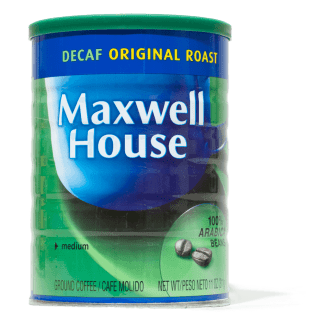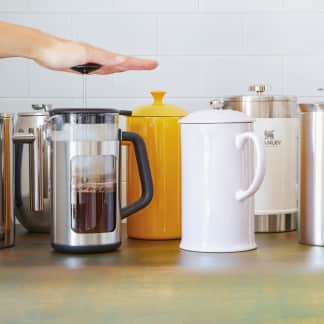Reviews You Can Trust.
See Why.
Supermarket Medium-Roast Coffee
Decades after they convinced Americans to drink ultradark French and Italian roasts, the producers of blackened beans are coming out with lighter options. So how’s the coffee?
Editor&aposs Note:UpdateJanuary 2019
Top Pick

WinnerPeet’s Coffee Café Domingo
By far the darkest roast in the lineup, this sample came across as “extremely smooth” and “bold-tasting,” with a “stronger finish” than other samples. It tied for the smallest number of defective beans and had low acidity and optimal moisture. Its “rich,” “chocolate,” and “toast” flavors make it the perfect brew for those who want a break—but not too much of one—from ultradark French roasts.
pH: 5.33
Agtron: 39
Quakers: 1
Moisture: 1.28 percent
Price at Time of Testing: $13.95 for 1-pound bag ($0.87 per oz)
By far the darkest roast in the lineup, this sample came across as “extremely smooth” and “bold-tasting,” with a “stronger finish” than other samples. It tied for the smallest number of defective beans and had low acidity and optimal moisture. Its “rich,” “chocolate,” and “toast” flavors make it the perfect brew for those who want a break—but not too much of one—from ultradark French roasts.
pH: 5.33
Agtron: 39
Quakers: 1
Moisture: 1.28 percent
Price at Time of Testing: $13.95 for 1-pound bag ($0.87 per oz)
Sign up for the Well-Equipped Cook newsletter
Shop smarter with our ATK Reviews team's expert guides and recommendations.
What You Need to Know
Well into the late 1990s, most of the coffee consumed in this country was a medium roast. This was the classic American cup: lighter and more acidic than today’s espresso-dark brew. Lighter coffees prevailed in part because they maximized yield: The less coffee companies roasted the beans the more weight they retained and turned into profit. It took West Coast coffeehouse roasters like Peet’s and Starbucks to show us another side of coffee flavor. They began roasting coffee dark—so dark that practically all you taste is the smoky depth of the roast versus the beans’ individual flavors. That profile appealed to many coffee drinkers; when they jumped on board, sales of dark beans shot up in supermarkets.
But all along, fans of medium-roast coffee resisted, insisting that überdark French and Italian roasts tasted charred. These holdouts helped ensure that lighter coffee continued to do a brisk business in stores. And lately, it’s not just ordinary coffee drinkers who think these roasts have merit. An increasing number of mail-order roasters are now specializing in lighter roasts, extolling their broader spectrum of flavors. “The objective is to protect the volatile aromas and fleeting flavors that dissipate with darker roasting,” explained Ric Rhinehart, executive director of the Specialty Coffee Association of America. These attributes can include floral, fruity notes and bright, lively acidity.
Perhaps in response to this mini-movement, some of the big-name dark-roast pioneers have also thrown their hats into the lighter-roast ring. A year ago in January, Starbucks came out with its “blonde” roasts, two blends of lighter-roasted beans now sold in all of its outlets and in grocery stores. Peet’s Coffee & Tea answered with two blends roasted more lightly than its other offerings. We decided it was time to give medium roasts a closer look. We selected a new lighter roast from Peet’s and one from Starbucks, along with the medium roasts of five other top-selling supermarket brands. Which would do a better job? And, most important, would we even like the coffee?
Not-So-Dark Arts
Despite the fact that these coffees were the lightest roasts available at the supermarket, the colors of the beans told another story. To find out exactly what we were dealing with, we gave samples to a lab to measure their Agtron scores. The Agtron is an instrument that analyzes how much light the beans reflect; the more light reflected the lighter the roast and the higher the Agtron number. Our samples ranged from 57 (a solid medium roast according to industry standards) to 39 (a dark roast by a hair), demonstrating that “medium roast” is a pretty vague term.
As we sampled all seven coffees without milk or sweeteners in a blind tasting, it appeared that most of us weren’t ready to switch our allegiance to the lighter side of flavor. Our favorite brew was the one with the significantly lower Agtron score, making it the darkest roast of the bunch by far. Tasters lauded this coffee’s “toasty” earthiness and hints of “chocolate.” By and large, super-bright, acidic flavors—hallmarks of lighter roasts—didn’t rate well. The lightest roast in our lineup was panned for having the most markedly acidic taste and fell to second-to-last place. In fact, only one brew with the recognizably bright notes of a medium-roast flavor profile made it into the “recommended” category.
But as we analyzed taster comments more closely, we realized that when tasters didn’t love a brew, it often had nothing to do with light- or dark-roast preferences. In our least favorite sample, tasters ferreted out “sour,” “fermented” flavors that were simply out of place in coffee. The most acidic brand hinted of “cherry/almond” notes that were also jarring. And some brands simply lacked oomph, tasting “flat.” Although the coffees we brewed were well within the expiration dates printed on the bags, a few samples tasted stale—even old. Given this, could it be that some of these brews were just mediocre coffee?
A Good Bean for a Good Brew
Countless variables can influence coffee flavor, from varietal; to origin; to growing conditions; to how the beans are fermented, dried, and stored; to the age of the beans when they arrive at a roaster; to how many of the wrinkled, underripened beans known as “quakers” slip through in a shipment. Quakers can have a surprisingly significant impact on coffee flavor. While almost all coffee contains a few of these bad beans, more than three per pound can impart unpleasant nut- and cereal-like tastes to the brewed cup. And sure enough, when we sent samples of our coffees to the lab to weed out the underripened beans (which don’t darken during roasting), we found a direct correlation between number of quakers and our tasters’ preferences: Our least favorite coffee had 14 bad beans; our next least favorite had 7; our top finisher, 1.
All of the above factors affect coffee before it reaches the roaster, and the best brands are very selective in how they source beans. But another critical factor influencing quality happens during roasting: regulating moisture level. Green beans typically contain about 10 percent moisture; after roasting, that level should remain between 0.5 percent and 3 percent. Some specialty roasters are even more precise. George Howell, of George Howell Coffee Company, in Acton, Massachusetts, aims for a moisture level of 1.7 to 2.5 percent. Why is the amount of moisture in beans so important? The best coffee, regardless of roast color, should taste full-bodied with a flavor that lingers pleasantly. But if the beans are too dry, they won’t extract properly when brewed, which in turn affects the coffee’s body and richness.
Curious how the beans in our lineup would rate when it came to moisture, we sent samples back to the lab. This measurement also strongly correlated with how tasters experienced a coffee. The two brands we recommend were the only coffees to be solidly within the optimal moisture range. Three brands tested well below the ideal target—unsurprisingly, they were the same ones that tasters downgraded for having “flat” or “cardboard” tastes. And there is also such a thing as coffee that is too moist: The bottom-ranking sample, with a moisture level almost a full percentage point above the ideal cutoff, was the one marred by “sour,” “fermented” flavors.
Roast to Taste
If the beans’ moisture level is so important, why didn’t more brands in our lineup fall within the ideal range? Sourcing cheaper, lower-quality beans is one way for a roaster to control costs—but so is streamlining the roasting process. Roasters typically evaluate bean moisture at the start of roasting and then set time and temperature monitors that will help determine when a batch is done. But for the most discriminating roasters, sensory cues are even more crucial: the first crack of the beans popping as they roast; their aroma as they develop; the way they look, feel, and taste. These roasters taste, or “cup,” the batches continually to determine precisely when the beans have hit their sweet spot. Though this step slows the overall process, it’s critical, the experts we talked to told us, since every batch of beans behaves differently. Limiting how often beans are cupped can help a roaster economize. And so can “quenching,” whereby the roaster douses the beans with water to cool them before bagging. Specialty roasters favor slower air drying, which also doesn’t introduce unwanted moisture.
The roasters of our winning coffee go to particularly great lengths to achieve optimal results, tasting batches about 50 times in a typical shift—an unusually high amount. Tasters praised our winner not only for its “bold,” “burnt caramel” flavors that were not so far from those of dark roasts but also for its “smooth, full-bodied taste”—a quality that belongs to any good cup of coffee.
Our other winner was closer to a true medium roast. Though its producer wouldn’t reveal details of its sourcing or roasting processes to us, the company is also clearly doing many things right. Tasters lauded this brew for a “satiny,” “lemony” taste that was “a good compromise between acidity and earthiness.” The numbers lined up, too: These beans were in the ideal moisture range and just two were defective. For those seeking the brighter flavors of medium-roast coffee, it's a good choice.
America's Test KitchenWatch Now
Everything We Tested
Recommended

WinnerPeet’s Coffee Café Domingo
By far the darkest roast in the lineup, this sample came across as “extremely smooth” and “bold-tasting,” with a “stronger finish” than other samples. It tied for the smallest number of defective beans and had low acidity and optimal moisture. Its “rich,” “chocolate,” and “toast” flavors make it the perfect brew for those who want a break—but not too much of one—from ultradark French roasts.
pH: 5.33
Agtron: 39
Quakers: 1
Moisture: 1.28 percent
Price at Time of Testing: $13.95 for 1-pound bag ($0.87 per oz)
By far the darkest roast in the lineup, this sample came across as “extremely smooth” and “bold-tasting,” with a “stronger finish” than other samples. It tied for the smallest number of defective beans and had low acidity and optimal moisture. Its “rich,” “chocolate,” and “toast” flavors make it the perfect brew for those who want a break—but not too much of one—from ultradark French roasts.
pH: 5.33
Agtron: 39
Quakers: 1
Moisture: 1.28 percent
Price at Time of Testing: $13.95 for 1-pound bag ($0.87 per oz)
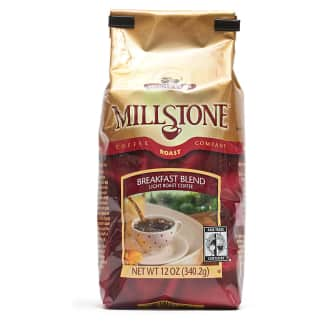
Millstone Breakfast Blend
This “satiny” coffee was “lemony” and “very enjoyable,” with a “slightly nutty aftertaste.” It “hit the middle of the road” for “acidity, earthiness, and complexity.” As with our winner, lab results showed low acidity, few defective beans, and ideal moisture. It’s a good choice for those who enjoy brighter, livelier medium-roast flavors.
pH: 5.22
Agtron: 47
Quakers: 2
Moisture: 1.6 percent
Price at Time of Testing: discontinued
This “satiny” coffee was “lemony” and “very enjoyable,” with a “slightly nutty aftertaste.” It “hit the middle of the road” for “acidity, earthiness, and complexity.” As with our winner, lab results showed low acidity, few defective beans, and ideal moisture. It’s a good choice for those who enjoy brighter, livelier medium-roast flavors.
pH: 5.22
Agtron: 47
Quakers: 2
Moisture: 1.6 percent
Price at Time of Testing: discontinued
Recommended with reservations
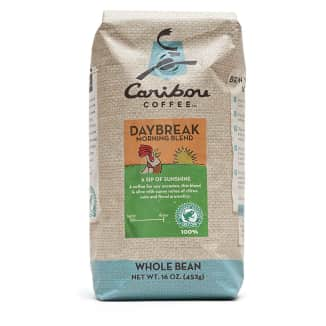
Caribou Coffee Daybreak
Some tasters were able to detect a “slight berry taste” with “black tea–like” undertones in this coffee. For others, it was “flat,” “bland,” and “not very distinctive.” “Smells nutty but no taste,” is how one taster put it. The lab results indicated extremely low moisture in the beans, which almost certainly weakened the brew.
pH: 5.19
Agtron: 46
Quakers: 1
Moisture: 0.06 percent
Price at Time of Testing: $12.54 for 12-ounce bag ($1.05 per oz)
Some tasters were able to detect a “slight berry taste” with “black tea–like” undertones in this coffee. For others, it was “flat,” “bland,” and “not very distinctive.” “Smells nutty but no taste,” is how one taster put it. The lab results indicated extremely low moisture in the beans, which almost certainly weakened the brew.
pH: 5.19
Agtron: 46
Quakers: 1
Moisture: 0.06 percent
Price at Time of Testing: $12.54 for 12-ounce bag ($1.05 per oz)
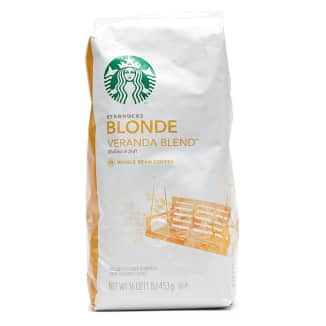
Starbucks Blonde Veranda Blend
The “approachable” taste of this offering from the dark-roast giant of coffee companies “goes down pretty smooth,” though some thought it “one-dimensional,” like “cardboard.” Said one taster: “It doesn’t have that weight-on-your-tongue feeling that I like in coffee.” Lab tests confirmed the problems, finding low moisture and some defective beans.
pH: 5.25
Agtron: 46
Quakers: 5
Moisture: 0.14 percent
Price at Time of Testing: $11.95 for 1-pound bag ($0.75 per oz)
The “approachable” taste of this offering from the dark-roast giant of coffee companies “goes down pretty smooth,” though some thought it “one-dimensional,” like “cardboard.” Said one taster: “It doesn’t have that weight-on-your-tongue feeling that I like in coffee.” Lab tests confirmed the problems, finding low moisture and some defective beans.
pH: 5.25
Agtron: 46
Quakers: 5
Moisture: 0.14 percent
Price at Time of Testing: $11.95 for 1-pound bag ($0.75 per oz)
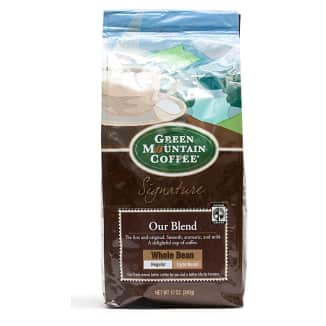
Green Mountain Coffee Our Blend
This sample had “a little dried fruit toward the finish but that’s it,” as one taster put it. Though “robust upfront,” it finished with an overly “flat, lemony” taste. Lab results supported these impressions, showing relatively high acidity and not much moisture, which limited its extraction.
pH: 5.09
Agtron: 46
Quakers: 3
Moisture: 0.14 percent
Price at Time of Testing: $9.36 for 12-ounce bag ($0.78 per oz)
This sample had “a little dried fruit toward the finish but that’s it,” as one taster put it. Though “robust upfront,” it finished with an overly “flat, lemony” taste. Lab results supported these impressions, showing relatively high acidity and not much moisture, which limited its extraction.
pH: 5.09
Agtron: 46
Quakers: 3
Moisture: 0.14 percent
Price at Time of Testing: $9.36 for 12-ounce bag ($0.78 per oz)
Not Recommended
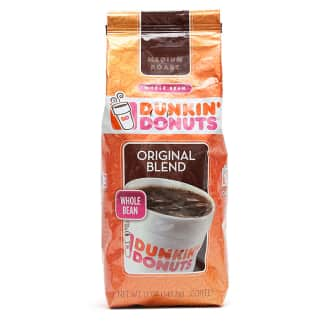
Dunkin’ Donuts Original
This medium-roast stalwart, the lightest roast in our tasting, was so “sharp and bright and very acidic” that it had one taster pleading, “I need milk!” Another deemed it an “acid bomb”; lab tests confirmed that this was the most acidic coffee we tasted. A high number of defective beans gave it weird “cherry/almond” off-tastes.
pH: 4.94
Agtron: 57
Quakers: 7
Moisture: 0.68 percent
Price at Time of Testing: $11.99 for 12-ounce bag ($1 per oz)
This medium-roast stalwart, the lightest roast in our tasting, was so “sharp and bright and very acidic” that it had one taster pleading, “I need milk!” Another deemed it an “acid bomb”; lab tests confirmed that this was the most acidic coffee we tasted. A high number of defective beans gave it weird “cherry/almond” off-tastes.
pH: 4.94
Agtron: 57
Quakers: 7
Moisture: 0.68 percent
Price at Time of Testing: $11.99 for 12-ounce bag ($1 per oz)

Eight O’Clock Coffee Original
Our least favorite coffee was “sour” and “dirty-tasting—like socks,” with a “fermented taste.” This brew was also “slightly metallic,” “like coffee you’d get at a diner.” With the highest number of defective beans of all the coffees we sampled, it tasted “sweetly acidic”; the fermented flavor likely came from its high level of moisture.
pH: 5.06
Agtron: 47
Quakers: 14
Moisture: 3.85 percent
Price at Time of Testing: $6.95 for 12-ounce bag ($0.58 per oz)
Our least favorite coffee was “sour” and “dirty-tasting—like socks,” with a “fermented taste.” This brew was also “slightly metallic,” “like coffee you’d get at a diner.” With the highest number of defective beans of all the coffees we sampled, it tasted “sweetly acidic”; the fermented flavor likely came from its high level of moisture.
pH: 5.06
Agtron: 47
Quakers: 14
Moisture: 3.85 percent
Price at Time of Testing: $6.95 for 12-ounce bag ($0.58 per oz)
*All products reviewed by America’s Test Kitchen are independently chosen, researched, and reviewed by our editors. We buy products for testing at retail locations and do not accept unsolicited samples for testing. We list suggested sources for recommended products as a convenience to our readers but do not endorse specific retailers. When you choose to purchase our editorial recommendations from the links we provide, we may earn an affiliate commission. Prices are subject to change.
Reviews You Can Trust
The mission of America’s Test Kitchen Reviews is to find the best equipment and ingredients for the home cook through rigorous, hands-on testing. Have a question or suggestion? Send us an email at atkreviews@americastestkitchen.com. We appreciate your feedback!
Reviews You Can Trust.
See Why.

